The Ultimate List of Zero & Low Waste Frugal Food Hacks

This page may contain affiliate links.
If you’re stumbling upon this post, I feel for you! Chances are, you’re noticing your grocery bill creeping higher and higher and are feeling the need to knock it back down a few sizes. We have over 80 frugal food hacks to help you reduce your waste (and your grocery bill).
Ready for the list? See our list of 80+ zero waste frugal food hacks here!
How much have American food prices increased?
At the time of writing, American food prices increased 8.8% from 2021 by March 2022 ( source). That means for every $20 you would have spent in the past, you’re paying an extra $1.76. According to CNBC, foods cooked at home now cost 10% more than last year.
Since the average American family spends about $412 per month on groceries, this means about $41 extra per month ( source). Although that might not seem like a lot, it’s not just groceries that cost more ( source). Everything costs more, especially fuel and energy.
Plus, specific types of foods have shot up way more than 8.8%!
US food price increases from 2021-2022 – Consumer Price Index ( source)
- Meat, poultry and fish: 13.1%
- Eggs: 11.4%
- Fats & oils: 11.7%
- Fresh fruits: 10.6%
- Fresh vegetables: 5.9%
Clearly, it would help to learn some money saving frugal food hacks to make the most of each and every penny!
Bonus? You might even start living a more sustainable, zero-waste lifestyle in the process.
How can going zero waste help you save money?
Zero waste is a type of sustainable living that focuses on eliminating unnecessary packaging waste. Think of all the things you’ve purchased locked in to those hard plastic clamshells you need heavy machinery to open. Yikes!
In a zero waste lifestyle, you’re trying to make the most of everything you already own and make thoughtful choices about the items you bring home.
This mean you’re inherently spending less because you’re using what you already own. Since you’re slowing down and thinking through what you need to buy, you also tend to buy less overall.
Honestly, it might not even be possible to be 100% zero waste, at least in our current world.
This is why I advocate for a low waste lifestyle. Do your best to use what you already have and think through new purchases. In a low waste lifestyle, you aren’t trying to totally eliminate all the waste you create, but you are trying to minimize it as much as possible.
Read: 30+ Frugal Sustainable Living Tips to Save Money & Help the Planet
Food waste adds up
Think about it. How much food do you already throw out? The average American family tosses $1,500 in food per year, which is about 30-40% of all the food they bring home ( source).
That’s SO much food. When food sits in a landfill, it releases methane gas that contributes to global warming. If global food waste was listed as its own country, it’d be the 3rd largest greenhouse gas emitter ( source).
It’s not just the food wasted, but also all of the land, water, fertilizers, fuel, labor, and money. In American, the amount of energy and resources that go into creating all the food wasted has the same carbon emissions as 42 coal-powered plants ( source).
It’s better for everyone (you, me, your mom, that nice lady from work, your nation, your wallet, the planet) to make the most of what we buy and what we already own.
Learn more tips about setting up a real food zero waste kitchen here!
Zero Waste Frugal Food Hacks
Learn how to be frugal with food with these frugal hacks to save money!
Use what you have
- Shop your pantry & fridge before hitting the store
- Try a pantry challenge to eat everything up (see how long you can go without grocery shopping)
- Use up the aging produce in your fridge
- Set up a FIFO system (first in, first out) to consume perishables before they go bad
- Save all veggies peels, leaves, stems, and scraps in a freezer bag for stock
- Thin out milk & juices to make them stretch
- Eat ALL of your leftovers
- Find a use-it-up recipe that can hide whatever random veggies you have on hand
- Save leftover bread to make bread crumbs, croutons, or even make breadcrumb pie!
- Save bones from roasts for stock
- Turn citrus peels into cleaning spray by storing them in vinegar
- Use old bananas in banana bread
- Turn your sourdough discard into snacks, muffins, pancakes, or more
- Take home any leftovers from restaurants or family dinners
- Stretch simple meals into soups by thinning them with stock
We love following the Zero Waste Chef for her amazing frugal food tips to make the most of the food you already have! She has a cookbook, too.
Find some recipes & get cooking
- Bake your own bread & desserts
- Make your own salad dressings
- Try to make your favorite snack from scratch
- Make your own pancake mix
- Turn cheap vodka into vanilla extract
- Make stock with beef bones or chicken backs & feet
- Stretch meats with beans and veggies
- Swap apple cider vinegar for lemon to keep apples from browning
- Make your own nut butters
- Make vinaigrette with leftover jam in the jar
- Ferment veggies to make kraut
- Culture your own yogurt or kefir
- Make your own nut milks
- Make jams, jellies, or pickles to keep produce lasting longer
- Brew your own iced tea
- Use a pressure canner to turn make canned beans, broths and stocks, tomato sauces, and more
Wish you could stick this list on your fridge?
You can! I created a free printable version of this list to help you remember them. Simply click here to download (no email required)!
Weekly Cooking Routines
- Write out a
- Cook dinner at home
- Pack a lunch
- Prep simple breakfasts (chia pudding, overnight oats)
- Make popcorn instead of buying chips
- Stop snacking
- Double a recipe and freeze one half for later
Read: How to Stock a Sustainable Baker’s Pantry for Beginners
Keep food fresh
- Keep bread in the fridge
- Dry excess herbs
- Give food a sniff test to see if it’s still good
- Cut away gross parts of produce to salvage what’s still good
- Store herbs in water
- Wrap celery in beeswax wrap or foil
- Keep carrots in water in the fridge to stay firm & crisp
- Store onions away from potatoes
- Store an apple with potatoes to keep them from sprouting
- Keep apples in dark, cool places or the fridge
- Make sure your banana stems are wrapped to slow ripening
- Shred & freeze zucchini to use later
- Store onions in a dark, well-ventilated area
- Place the whites of a green onion in a jar of water on your kitchen windowsill for fresh greens
- Turn carrots tops & other greens into pesto
- Store extra bread & perishables in the freezer
- Use a vacuum jar sealer to keep dry goods fresh for longer
- Freeze berries for the winter
Read: A Beginner’s Guide to Setting Up a Real Food Zero Waste Kitchen
Make smart buying decisions
- Shop at bargain grocery stores
- Only buy what you need with a pantry staples checklist
- Buy in bulk (either bulk bins or the largest package)
- Price out the unit price or price per ounce (simply divide the price by the number of ounces per package). Get the cheapest one!
- Look for canned or frozen produce if you need to save on fresh
- Check your grocery store for digital coupons
- See if your local farmer sells seconds (imperfect produce)
- Sign up for a discounted trial of a grocery delivery service (Save $10 on your first order!)
- Buy reduced price produce and dairy
- Stock up on meats after holidays
- Buy the cheapest cuts of meat including liver, heart, etc)
- Prioritize veggies that lasts well in the fridge
- Split a bulk order with a friend or family
- Purchase bulk produce for preserving
- Buy produce in season
- Shop at restaurant stores
- Stock up on your family favorites when sales are on
- Scrounge around the clearance section
- Hit the thrift store for kitchen supplies or tools
- Look for produce $1 per pound or cheaper
Read: Where to Buy Bulk Produce for Canning, Preserving, and Pickling
Tap into your community
- Offer to work on a local farm in exchange for produce
- If you can pull together the cash, buying meat in bulk from a farmer is cheaper per pound
- Look for a free produce table near you from Food is Free
- Check your Buy Nothing group for people decluttering pantries or moving
- Go to upick farms
- Ask neighbors if you can take home fallen fruit or pick a bucket
- Join a gleaning group
- Swap your excess produce for something different from a friend
- Barter for fresh eggs, jams, bread, or more
Grow your own
- Grow food from scraps
- Set up a garden with easy vegetables for beginners
- Learn how to forage simple greens and berries
- Grow your own herbs
- Plant sprouted potatoes, garlic, and onions
- Sprout microgreens for low-cost nutrition
Make Some Cuts
- Skip the booze for a bit
- Eat meatless a few nights per week
- Wash & reuse plastic bags to save money
- Switch from coffee to tea
- Replace disposable parchment paper with silicone baking mats
- Swap out paper towels for cleaning rags
- Use natural cleaning products like vinegar, baking soda, and hydrogen peroxide
- Save jars & tubs for food storage
Read: 12 Simple & Effective Zero Waste Cleaning Swaps Worth the Switch
Keep your grocery bill in check!
Get your pantry staples list now!
Cooking from scratch is a gift you can give yourself and your family! It’s way easier than you think and my free pantry staples list & meal planner will help you get started right away.
Send your free downloads directly to your inbox!
Add your frugal food hacks to this list
Got any more food hacks you think should be on the list? We’ll be updating as they come in! We want this to be the ultimate guide to a frugal low-waste kitchen, so please share any advice that could help people save money!

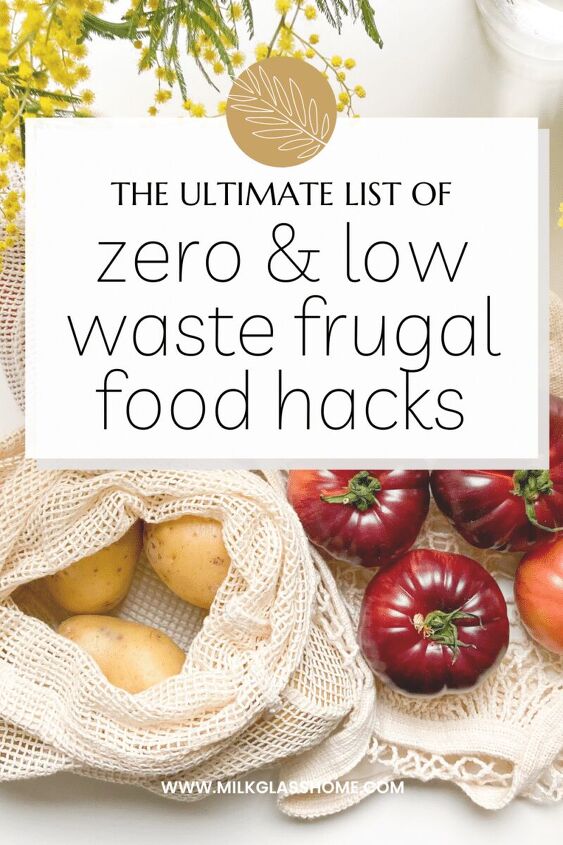











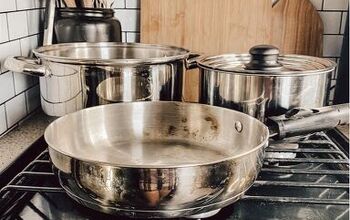





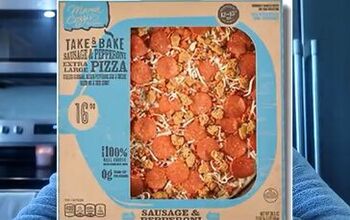
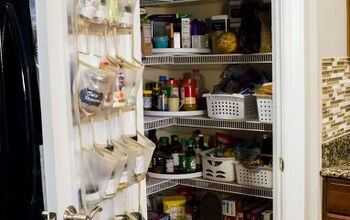


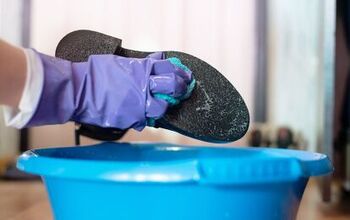


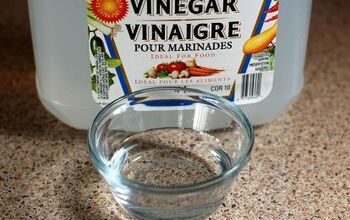



Comments
Join the conversation
Excellent Job! Much Gratitude! Truly Enjoyed!
Great lists and ideas. Well done!
However, I disagree with thinning/watering down milk. The body needs a well balanced amount/ratio of fat-carbs-proteins in order to maintain optimum health. Especially children.
I definitely do dilute my juice 50-50 with plain filtered water or seltzer water and have done so for over 40 years since my first pregnancy to prevent gestational diabetes.